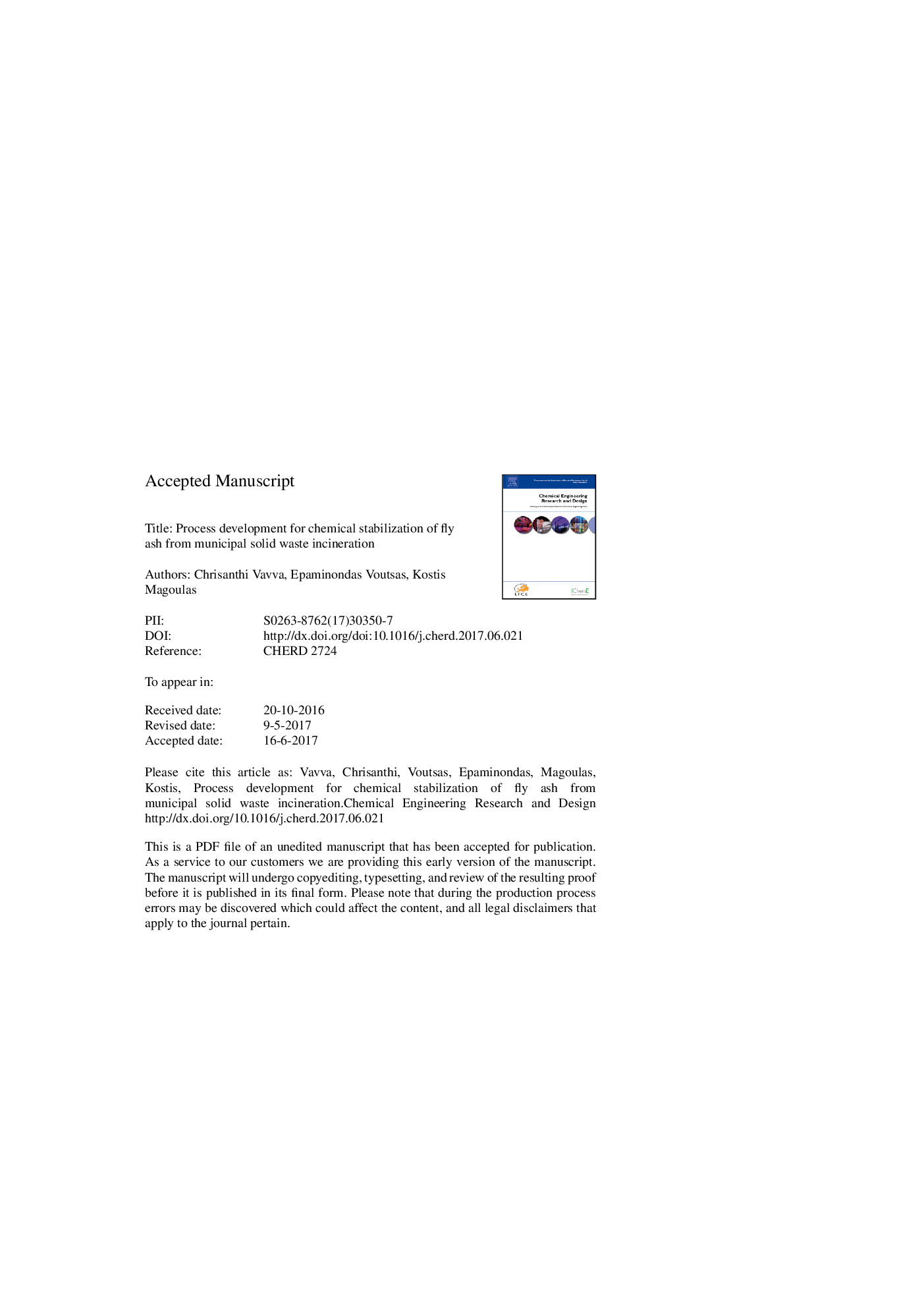| Article ID | Journal | Published Year | Pages | File Type |
|---|---|---|---|---|
| 4987085 | Chemical Engineering Research and Design | 2017 | 47 Pages |
Abstract
Î detailed characterization of fly ash collected from a municipal solid waste incinerator, which involves both its physicochemical properties and its leaching behavior, is presented. For the classification of the fly ash, the European standard leaching test EN 12457/2 was carried out and the leaching test results indicate that leachate concentration of Pb, TDS, chloride and sulfate ions, exceed the legal limit values for non-hazardous waste landfilling, according to Council Decision 2003/33/EC. Two techniques, phosphoric acid stabilization and water washing were used for the treatment of fly ash. Several parameters that affect the two processes were tested. Phosphoric acid proved to be very effective for the stabilization of Pb. Water washing reduced effectively the soluble fraction but attention was given to the mobilization of toxic heavy metals and to the wastewater which is produced. The combination of phosphoric acid stabilization and water washing was investigated, aiming to the successful stabilization of fly ash and the production of the best wastewater quality. The effect of various parameters, such as phosphoric acid to ash ratio, pH, the sequence of the two processes and different phosphate sources, was examined. The results indicate that using phosphoric acid with an acid to ash ratio of 7% w/w followed by water washing, successfully stabilizes the fly ash and produces a non-hazardous waste. In addition, the wastewater produced from this treatment method is less polluted with heavy metals than the other tested methods.
Related Topics
Physical Sciences and Engineering
Chemical Engineering
Filtration and Separation
Authors
Chrisanthi Vavva, Epaminondas Voutsas, Kostis Magoulas,
